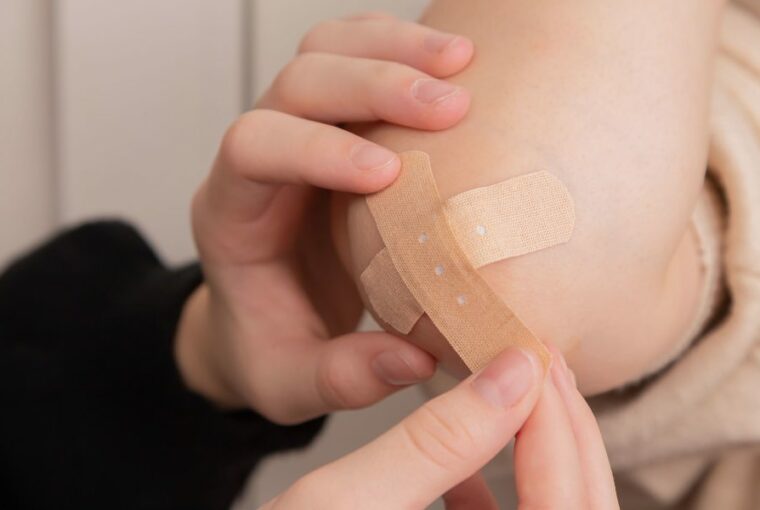Wounds are a natural part of life, but the body’s ability to heal itself is nothing short of remarkable. Central to this healing process is cell repair, an intricate mechanism where cells work together to restore damaged tissues. In this blog, we’ll delve into the significance of cell healing in wound repair and provide a comprehensive guide with helpful tips to enhance this natural process. From understanding the basics of cell healing to exploring the role of nutrition, hydration, sleep, and stress reduction, we’ll uncover the secrets to optimal wound repair.
Understanding Cell Healing
At the heart of wound repair is the fascinating process of cell healing. When the body sustains an injury, cells immediately spring into action to mend the affected tissues. This intricate dance involves various types of cells working collaboratively to clean the wound, promote tissue regeneration, and ultimately restore normal function. Understanding this process is crucial for anyone looking to optimize wound healing, as it empowers individuals to support and enhance the body’s innate ability to recover from injuries.
Nutrition For Enhanced Cell Healing
The saying “you are what you eat” holds particular significance in the context of wound healing. A balanced and nutrient-rich diet is fundamental to providing the body with the building blocks it needs for effective cell regeneration. Proteins, essential amino acids, vitamins, and minerals play key roles in supporting cell healing. Including foods rich in these nutrients, such as lean proteins, fruits, vegetables, and whole grains, can significantly contribute to the efficiency of the healing process. Moreover, individuals seeking to enhance the healing process may explore innovative supplements like peptides. Among peptides, TB-500’s impressive performance in supporting tissue repair and promoting cellular regeneration makes it a noteworthy and sought-after supplement by fitness enthusiasts. This peptide supplement has gained attention for its potential to aid in the recovery of injuries, making it a notable consideration for those looking to optimize their nutrition for advanced cell healing.
Hydration And Cell Healing
Proper hydration is often underestimated in its impact on cell function and, consequently, wound healing. Water is essential for various physiological processes, including the transport of nutrients and oxygen to cells involved in the repair process. Dehydration can impede these vital functions, slowing down the overall cell healing process. Ensuring an adequate intake of water, tailored to individual needs and environmental conditions, contributes to creating an optimal environment for cells to thrive. Hydration facilitates the removal of waste products from cells, allowing them to function more efficiently in repairing damaged tissues. It’s a simple yet powerful step individuals can take to promote overall health and enhance the body’s ability to heal itself.
Sleep And Cellular Repair
Quality sleep is a cornerstone of overall health, and its impact on cellular repair is profound. During deep sleep stages, the body undergoes essential processes that support cellular repair and regeneration. The release of growth hormones during these phases plays a crucial role in facilitating cell healing. Additionally, adequate sleep allows the immune system to function optimally, aiding in the removal of damaged cells and promoting the production of new, healthy ones. Establishing good sleep hygiene practices, such as maintaining a consistent sleep schedule and creating a conducive sleep environment, is paramount for individuals seeking to optimize cellular repair and enhance the overall healing process. Prioritizing quality sleep is not just a lifestyle choice; it is a proactive measure toward supporting the body’s innate ability to recover and rejuvenate.
Stress Reduction Techniques
The impact of chronic stress on the body’s healing mechanisms is significant, making stress reduction techniques essential for optimal cell healing. Elevated stress levels trigger the release of hormones that may impede cell regeneration and tissue repair. Incorporating stress reduction practices, such as mindfulness, meditation, or yoga, can help modulate the stress response and create a more conducive environment for cell healing. These techniques not only promote a sense of calm and well-being but also positively influence physiological processes at the cellular level. By managing stress, individuals contribute to a more favorable environment for their body’s natural healing mechanisms, facilitating efficient cell repair and overall well-being.
Topical Treatments For Cell Healing
In addition to internal factors like nutrition and hydration, external interventions through topical treatments can play a significant role in supporting cell healing. Natural remedies such as aloe vera, honey, and certain essential oils have demonstrated beneficial effects on wound healing and cell regeneration. These substances can create a conducive environment for cells to thrive and regenerate, promoting optimal wound repair. The application of these topical treatments not only addresses the surface of the wound but also contributes to the cellular processes occurring beneath. Incorporating these natural remedies into wound care routines can serve as a complementary approach to enhance the body’s natural ability to heal at the cellular level.
Exercise And Blood Circulation
Exercise is a crucial factor in promoting optimal blood circulation, which, in turn, significantly influences cell healing and tissue repair. Engaging in regular physical activity enhances the delivery of oxygen and nutrients to cells involved in the healing process. Improved blood circulation facilitates the removal of waste products from cells, creating a more efficient environment for cellular repair. Suitable exercises, as advised by healthcare professionals, can range from cardiovascular activities like walking and swimming to resistance training. By incorporating exercise into daily routines, individuals not only support overall health but also specifically contribute to the enhancement of blood flow and cellular healing. This holistic approach underscores the interconnectedness of physical activity and the body’s innate ability to repair and regenerate at the cellular level.
Avoiding Harmful Substances
Certain lifestyle habits can impede cell healing and compromise the effectiveness of the body’s repair mechanisms. Smoking, for instance, restricts blood flow and decreases oxygen levels, hindering cell regeneration. Excessive alcohol consumption can also have adverse effects on the healing process. Quitting these harmful habits is a proactive step toward creating an environment conducive to optimal cell healing.
Consultation With Healthcare Professionals
While the tips mentioned above are generally beneficial, it’s essential to recognize when to seek medical advice for wound healing. Persistent or severe wounds may require professional assessment and intervention. Healthcare providers play a crucial role in evaluating the progress of wound healing, identifying potential complications, and offering specialized treatments to support cell regeneration.
In conclusion, understanding the intricacies of cell healing and implementing supportive practices is key to optimizing the body’s ability to repair wounds. From prioritizing a nutrient-rich diet and staying adequately hydrated to ensuring quality sleep and managing stress, these tips collectively create an environment that fosters optimal cell healing. Embracing a holistic approach to wound care not only accelerates the healing process but also contributes to overall well-being. As individuals incorporate these practices into their lifestyles, they empower their bodies to harness the innate power of cell healing for lasting health and vitality.




